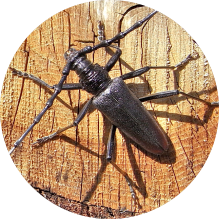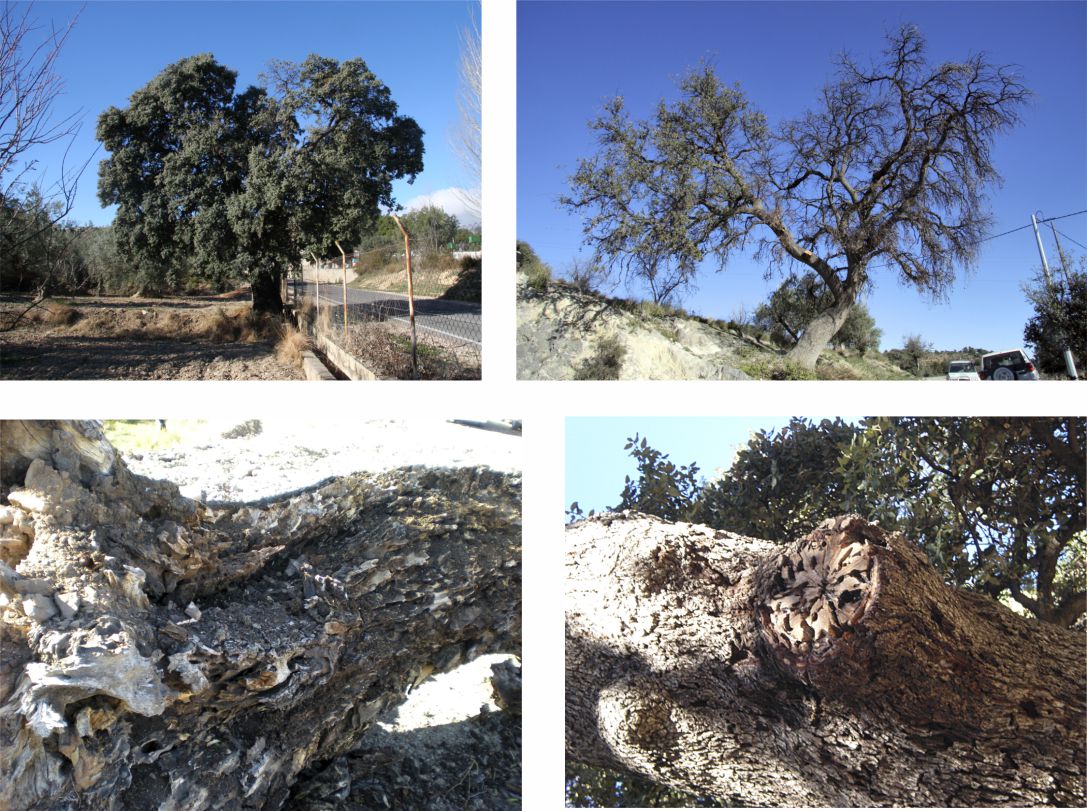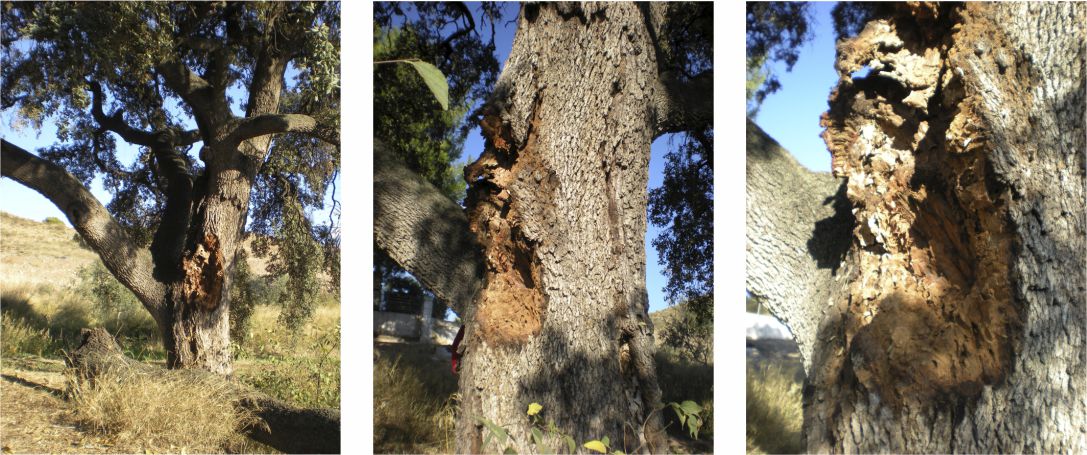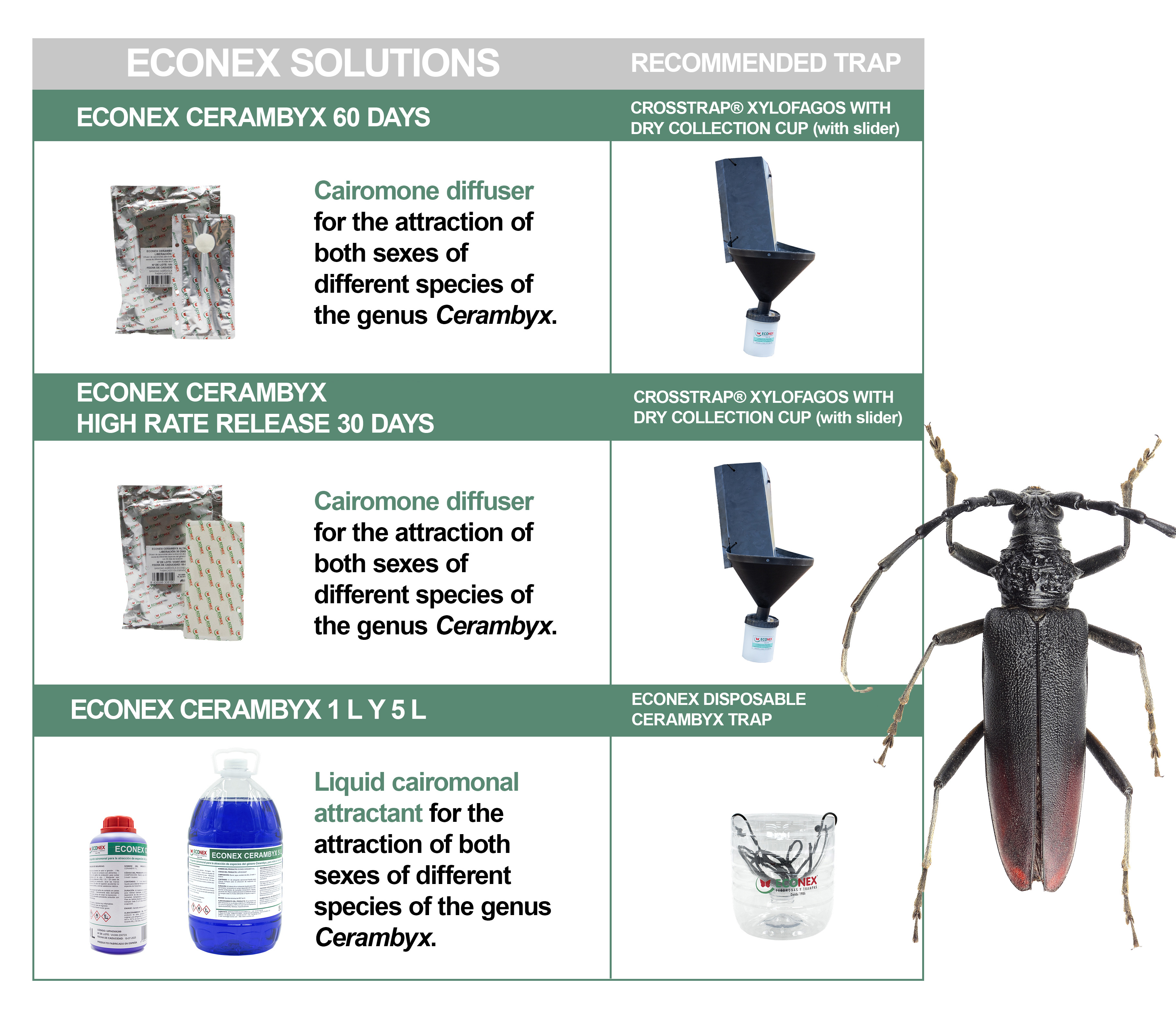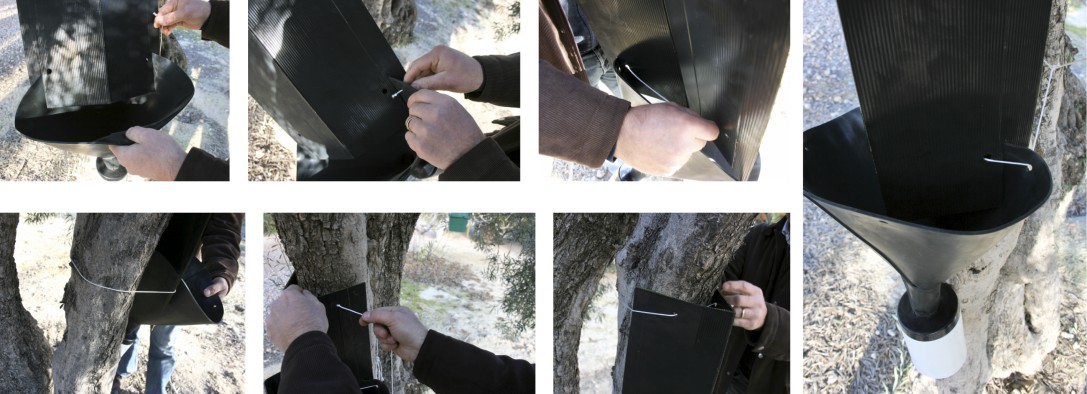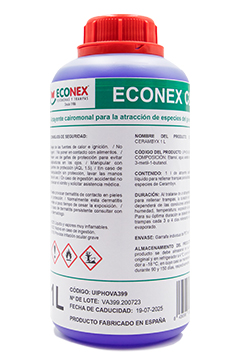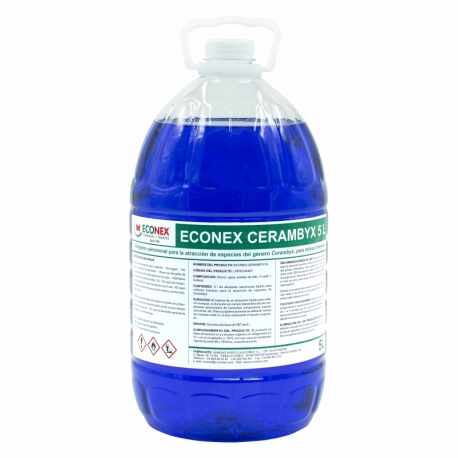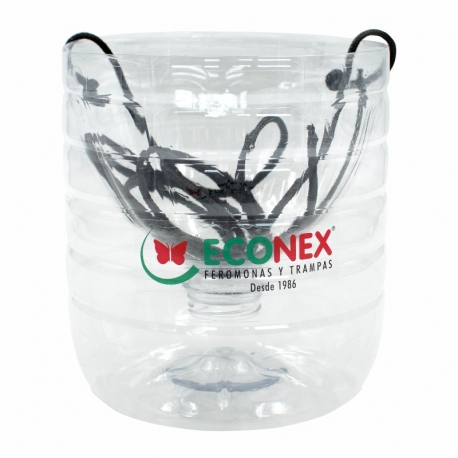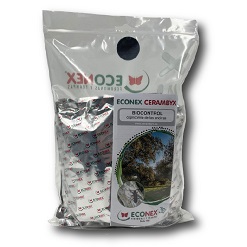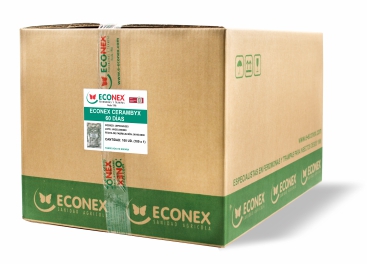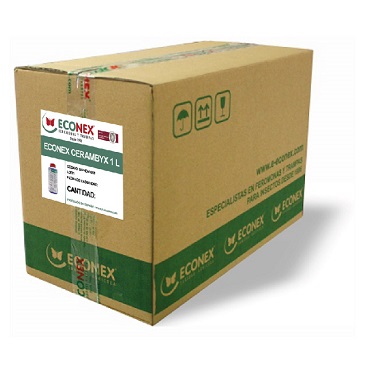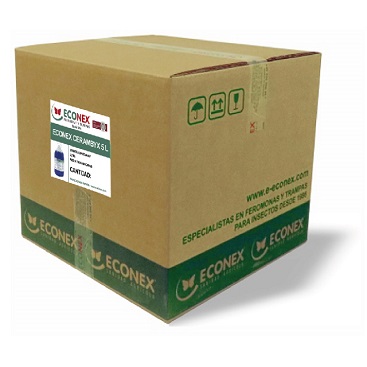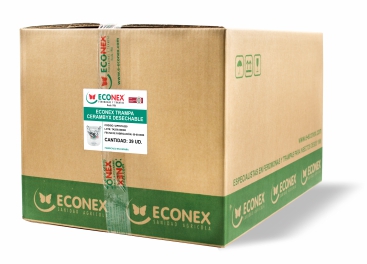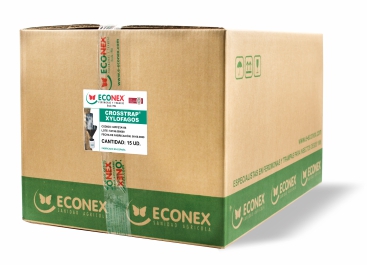General information
Cerambyx is a genus of coleopterans that belong to the Cerambycidae family, which consists of about 35 species that are present in Western Palearctic zones. In Europe, seven species can be found: C. carinatus(Küster, 1846); C. cerdo
Linnaeus, 1758; C. dux (Faldermann, 1837); C. miles Bonelli, 1823; C. nodulosus Germar, 1817; C. scopolii Füsslins, 1775 and C. welensii (Küster, 1846). Only three species can be found on the Iberian peninsula: C. welensii, C.
cerdo and C. miles.
They are large beetles that can grow up to 5 cm long, not including their antennae. The morphology of the three Iberian species is very similar and a detailed examination of certain structures to be able to differentiate them is needed, which has led to confusion in numerous references. According to Vives (2001), C. cerdo is the most common species on the Iberian peninsula, being present in all Holm oak and Oak forests, including those in Majorca.
C. welensii has a somewhat more restricted distribution, so it is only present in the Baetic mountain range, the Sierra Morena mountain range, The Central System, Alentejo and The Algarve, The Galician Massif, the Cantabrian mountains, the Pyrenees, the Ebro Valley and the Iberian System.
Biology
The biology of both species is very similar, the adults are active at dusk, although according to González et al (2015), in Mallorca, C. cerdo is mainly active during daylight hours. After mating, the females oviposit under the bark and thick branches of several species of deciduous trees such as the
Fagus, Castanea, Ulmus, Although they are more often found on any species of
Quercus. On occasion, this species has also been seen on Corylus and Ceratonia.

Cerambyx cerdo adults

Cerambyx welensii adults
After hatching, the larvae start to feed on the bark. Later, they enter inside the wood to stay there for two or three years, until reaching a very large size, up to 7 cm.
In the meantime, each larva would have excavated a good number of large oval-shaped galleries.
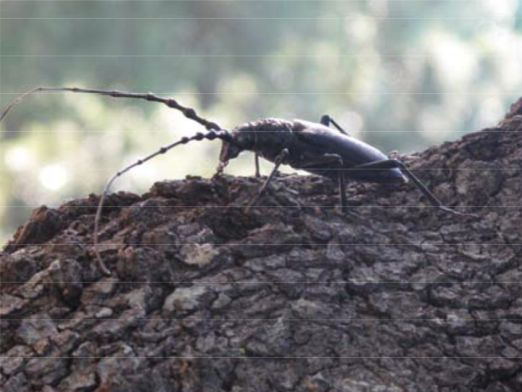
C.cerdo female laying eggs
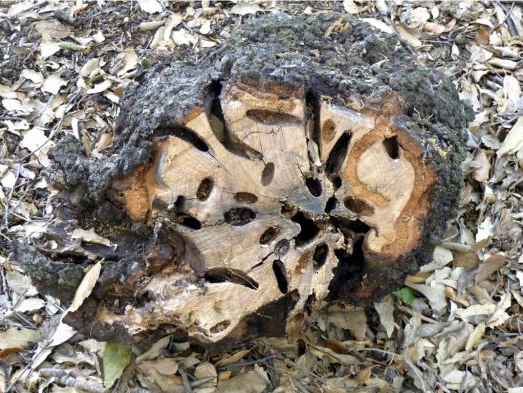
Galleries excavated by Cerambyx
When the larva is about to enter into its pupal stage, it excavates an exit hole in the tree. Afterwards, it returns to the gallery inside the trunk to pupate in safety.
The pupa hatches in Autumn, but the imago remains inside the gallery all winter long until it emerges at the beginning of Summer.
Damage
The adults can be observed licking the exudations from the cankers of the trees, that have been mainly caused by wounds due to bad pruning.
The adults lay their eggs close to these open and oozing wounds as a way to access their main food supply, xylem.
The trees infested with initial attacks do not show any symptoms. As the larvae population and their size increases, some accumulations of sawdust can be observed. After the first adults emerge, exit holes filled with lots of sawdust are clearly shown. These insects continue reproducing on the same tree for years because the larvae feed on the xylem, therefore not causing the direct and immediate death of the tree. In any case, the crown of the affected tree loses vigour and defoliation increases over the years. If the insect attacks just one thick branch, only a part of the crown is affected.
The destruction of the xylem vessels reduces the amount of water that flows up to the crown and as a consequence, the foliation decreases.
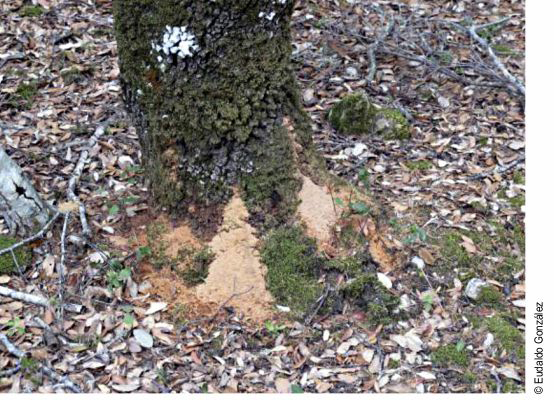
Tree greatly affected by Cerambyx
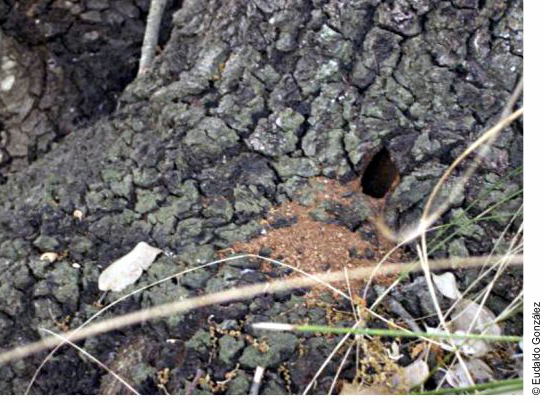
Hole from where the adult exits
But a tree in these conditions can last for many years. The trees affected by Cerambyx tend to die for another reason, caused by the loss of biomechanical resistance, due to the larvae perforating the wood.
This silent loss of resistance accumulates until the main branch system breaks off.
In fact, the branches that break are the largest, because they weigh more. Sometimes the trees split lengthways in half, literally. Therefore, it is a slow, hidden and silent process that takes many years to occur, given that it is accumulative and, in an instant,
it can end the life of a hundred-year-old tree.
These attacks are of great importance in the open woodlands and cork oak stands of Western Andalusia; Extremadura; and in the oak groves of the Balearic Islands.
It should be remembered that the Cerambyx cerdo species is protected in the European Union, as it is included in the Berne Convention, Annex 2: “Strictly protected species”; under the Habitat Directive in Annex 2: “Species of Community Interest” and Annex 4: “Species subject to strict protection”; and classified as Vulnerable
by the IUCN (International Union for Conservation of Nature).
ECONEX CERAMBYX 60 DAYS
Kairomone diffuser to attract both sexes of different species of. Cerambyx.
Formulation patented by the UNIVERSIDAD DE HUELVA under exclusive use by SANIDAD AGRÍCOLA ECONEX, S.L.
The diffuser is in a blister pack with a duration of 60 days under normal field conditions. It is individually packaged in an aluminium sachet with labelled specifications. Once removed from the packaging,
the diffuser does not need activating or opening, just placed correctly in the trap.
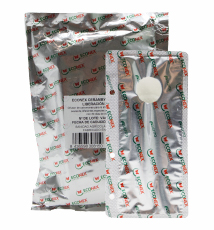
ECONEX CERAMBYX 60 DAYS
Kairomonal attractant diffuser to attract both sexes of the different species of Cerambyx sp.
Code: UIPHOVA303
OMDF register number (Ministry of Agriculture of Spain): 088/2015

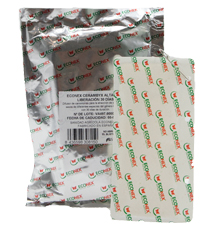
ECONEX CERAMBYX HIGH RATE RELEASE 30 DAYS
Cairomone diffuser for the attraction of both sexes of different species of the genus Cerambyx, with a duration in the field of 30 days.
Code: UIPHOVA497
OMDF register number (Ministry of Agriculture of Spain): 088/2015

Detection and monitoring
1 or 2 CROSSTRAP® XYLOFAGOS WITH DRY COLLECTION CUP should be installed per hectare The baited traps should be present in the forest between June and August, depending on the target species.
To intensify monitoring, up to 3 traps per hectare can be placed, with distances between traps from 100 to 500 m. The traps should be placed in trees with signs of attack.
Therefore, it will be necessary to pay particular attention to the presence of exit holes and sawdust at the base of the trees.
Dry capture is recommended, as well as a weekly or fortnightly inspection of the traps to avoid interfering with secondary fauna.
Necessary material
The trap CROSSTRAP® XYLOFAGOS WITH DRY COLLECTION CUP
It is a trap that is specifically designed for capturing insects that walk on the barks of trees, capable of adapting to the perimeter of the tree trunk thanks to its flexible funnel.
The trap consists of a 30 cm diameter soft funnel joined to a collection cup. On the side of the trap, in contact with the tree, a cellular polypropylene sheet is placed,
folded in the shape of a roof. The trap is attached to the tree by two nylon cords.
The upper cord is used to maintain the laminate attached to the tree. The cellular polypropylene sheet also has a series of lateral holes in which to place the attractant ECONEX CERAMBYX 60 DAYS.
The vanes, funnel and collection cup are treated with a slippery product which increases the number of captures considerably, preventing the insects from escaping.
The trap is used together with the CROSSTRAP® DRY COLLECTION CUP for dry use or live captures.
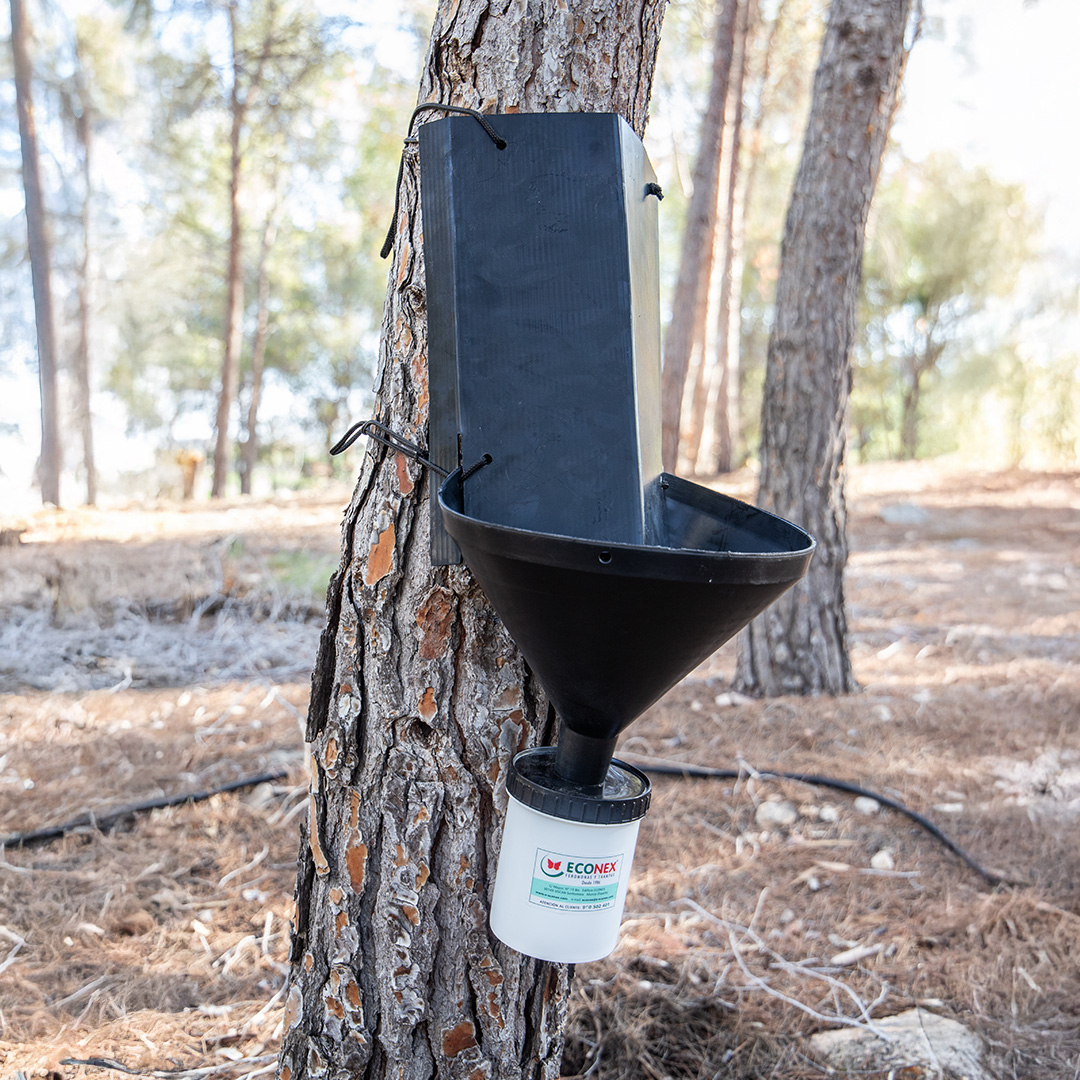
CROSSTRAP® XYLOFAGOS WITH DRY COLLECTION CUP
Code: UIPFETA196
OMDF register number (Ministry of Agriculture of Spain): 090/2015

The CROSSTRAP® DRY COLLECTION CUP (with slider) is designed to hold the captured insects is located at the bottom of the funnel. It has a capacity of approximately 1 litre (11 cm diameter x 13.5 cm high) and is fitted with a stainless-steel mesh at the bottom to allow rainwater to drain away.
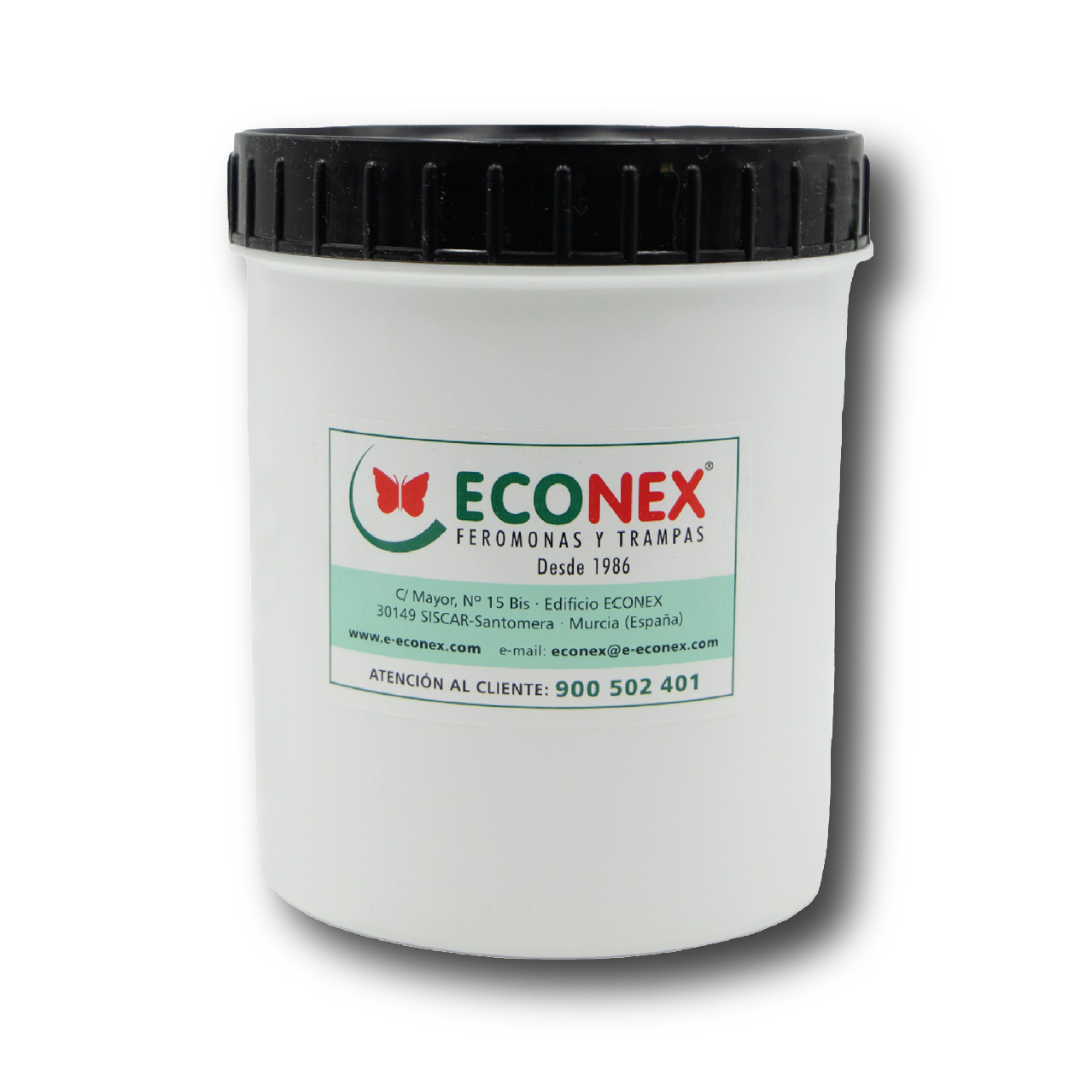
CROSSTRAP® DRY COLLECTION CUP
Collection cup for dry use, or live catches, located at the bottom of CROSSTRAP® traps.
Code: UIPFETA157

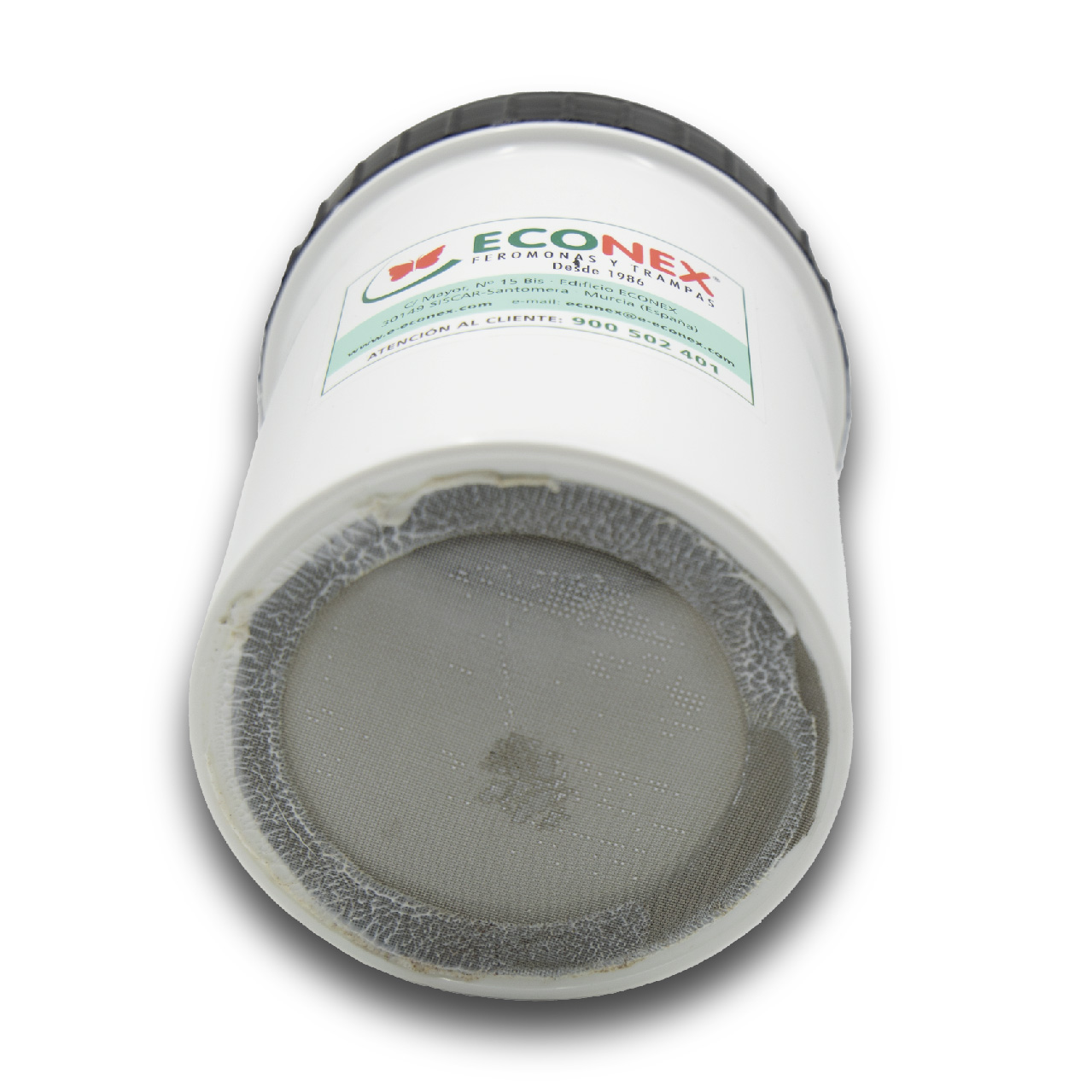
CROSSTRAP® DRY COLLECTION CUP
View from below
Choose a part of the tree that is straight enough with no branches or large knots, which allows maximum contact of the funnel and cellular polypropylene sheet with the surface of the tree. Hang the trap at a height of 120 cm.
Fit the grooves of the sheet with the border of the funnel. Pass the lower cord through the holes so that the sheet is attached to the funnel. Leave enough cord length to go round the perimeter of the tree and tie it with a tight knot.
Before tightening the knot permanently, make sure that there are no spaces between the funnel and the tree bark.
Take this moment to adjust the sheet into the shape of a folded cover, as indicated in the photograph.
Once the lower cord has been tied properly, pass the upper cord through the upper holes of the sheet and adjust it to avoid separation from the tree.
The trap is activated by hanging the attractant diffuser ECONEX CERAMBYX 60 DAYS on one of the holes of the sheet with the clip provided.
Remove the trap once the trapping period has ended to avoid interfering with secondary fauna.
TRAP MEASUREMENTS: The unfolded trap measures 33 cm diameter by 88 cm high. To transport it more easily, the trap is packaged with the sheets separated and the funnel folded.
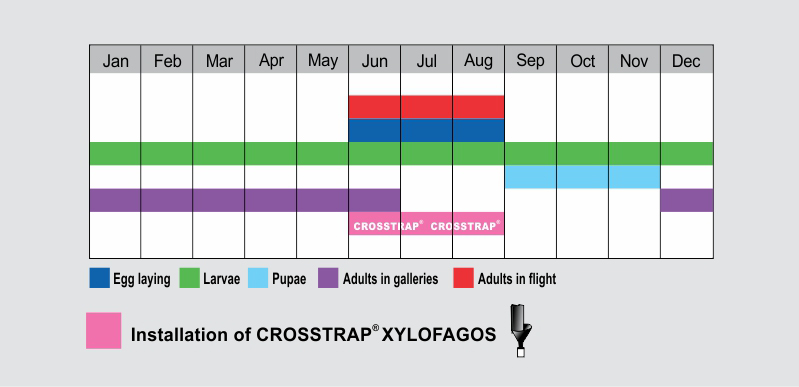
Phenology of Cerambyx cerdo
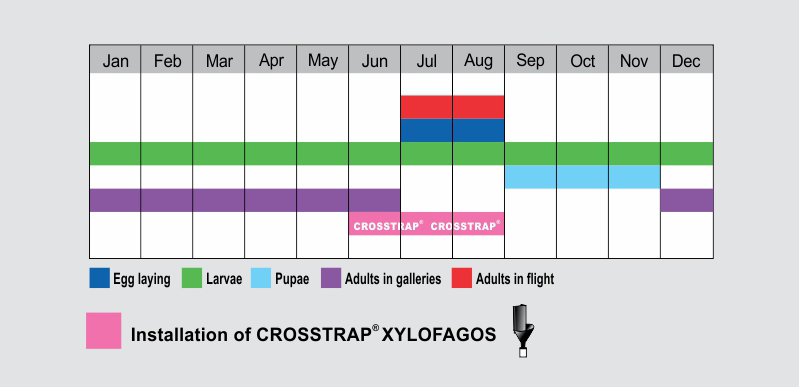
Phenology of Cerambyx welensii
The diffusers must be stored in their original packaging in a cool and dry place and separated from food and drinks.
To preserve the diffusers for long periods of time, it is recommended to keep them in the refrigerator at 4 o C in which case they will last for 2 years. Or they can be kept in the freezer at -20 o C for 4 years.
